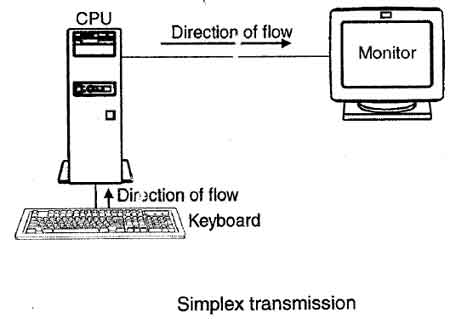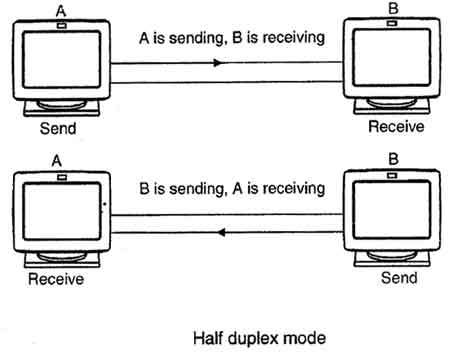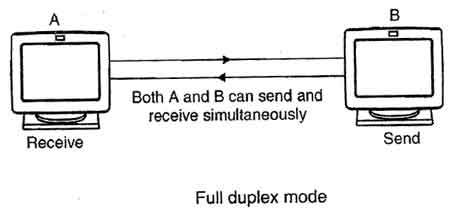OSI (Open Systems Interconnection) is reference model for how messages should be transmitted between any two points in a telecommunication network. A reference model is a framework for understanding relationships. Open System Interconnection, model defines a networking framework to implement protocols in seven layers. The purpose of the OSI reference model is to guide vendors and developers so that the digital communication products and software programs they create will interoperate. Control is passed from one layer to the next, starting at the application layer in one station, and proceeding to the bottom layer, over the channel to the next station and back up the hierarchy. The OSI reference model defines seven layers of functions that take place at each end of a communication. Developed by representatives of major computer and telecommunication companies beginning in 1983, OSI was officially adopted as an international standard by the International Organization of Standards (ISO).
The OSI model divides telecommunication into seven layers. The layers are in two groups. The upper four layers are used whenever a message passes from or to a user. The lower three layers (up to the network layer) are used when any message passes through the host computer. Messages intended for this computer pass to the upper layers. Messages destined for some other host are not passed up to the upper layers but are forwarded to another host. The seven layers of OSI are:
Physical (Layer 1)
This layer conveys the bit stream through the network at the electrical and mechanical level. It provides the hardware means of sending and receiving data on a carrier network.
The physical layer, the lowest layer of the OSI model, is concerned with the transmission and reception of the unstructured raw bit stream over a physical medium. It describes the electrical/optical, mechanical, and functional interfaces to the physical medium, and carries the signals for all of the higher layers. It provides:
·Data encoding: modifies the simple digital signal pattern (1s and 0s) used by the PC to better accommodate the characteristics of the physical medium, and to aid in bit and frame synchronization. It determines:
·Transmission technique: determines whether the encoded bits will be transmitted by baseband (digital) or broadband (analog) signaling.
·Physical medium transmission: transmits bits as electrical or optical signals appropriate for the physical medium
Data Link (Layer 2)
At this layer, data packets are encoded and decoded into bits. This layer provides synchronization for the physical level. It furnishes transmission protocol knowledge and management and handles errors in the physical layer, flow control and frame synchronization. This layer responsible for moving frames from one node to another. Header defines the sender and receiver information of the frame.It also uses a mechanism to recognise duplicate data frames. The data link layer is divided into two sub layers: The Media Access Control (MAC) layer and the Logical Link Control (LLC) layer. The MAC sub layer controls how a computer on the network gains access to the data and permission to transmit it. The LLC layer controls frame synchronization, flow control and error checking.
·Link establishment and termination: establishes and terminates the logical link between two nodes.
·Frame traffic control: tells the transmitting node to "back-off" when no frame buffers are available.
·Frame sequencing: transmits/receives frames sequentially.
·Frame acknowledgment: provides/expects frame acknowledgments. Detects and recovers from errors that occur in the physical layer by re-transmitting non-acknowledged frames and handling duplicate frame receipt.
·Frame delimiting: creates and recognizes frame boundaries.
·Frame error checking: checks received frames for integrity.
·Media access management: determines when the node "has the right" to use the physical medium.
Network (Layer 3)
This layer provides switching and routing technologies, creating logical paths, known as virtual circuits, for transmitting data from node to node. Routing and forwarding are functions of this layer, as well as addressing, internetworking, error handling, congestion control and packet sequencing.
The network layer controls the operation of the subnet, deciding which physical path the data should take based on network conditions, priority of service, and other factors. It provides:
·Routing: routes frames among networks.
·Subnet traffic control: routers (network layer intermediate systems) can instruct a sending station to "throttle back" its frame transmission when the router's buffer fills up.
·Frame fragmentation: if it determines that a downstream router's maximum transmission unit (MTU) size is less than the frame size, a router can fragment a frame for transmission and re-assembly at the destination station.
·Logical-physical address mapping: translates logical addresses, or names, into physical addresses.
·Subnet usage accounting: has accounting functions to keep track of frames forwarded by subnet intermediate systems, to produce billing information.
Transport (Layer 4)
This layer provides transparent transfer of data between end systems, or hosts, and is responsible for end-to-end error recovery and flow control. It ensures complete data transfer.
The transport layer ensures that messages are delivered error-free, in sequence, and with no losses or duplications. It relieves the higher layer protocols from any concern with the transfer of data between them and their peers.
The size and complexity of a transport protocol depends on the type of service it can get from the network layer. For a reliable network layer with virtual circuit capability, a minimal transport layer is required. If the network layer is unreliable and/or only supports datagrams, the transport protocol should include extensive error detection and recovery.
The transport layer provides:
·Message segmentation: accepts a message from the (session) layer above it, splits the message into smaller units (if not already small enough), and passes the smaller units down to the network layer. The transport layer at the destination station reassembles the message.
·Message acknowledgment: provides reliable end-to-end message delivery with acknowledgments.
· Message traffic control: tells the transmitting station to "back-off" when no message buffers are available.
Typically, the transport layer can accept relatively large messages, but there are strict message size limits imposed by the network (or lower) layer. Consequently, the transport layer must break up the messages into smaller units, or frames, prepending a header to each frame.
The transport layer header information must then include control information, such as message start and message end flags, to enable the transport layer on the other end to recognize message boundaries. In addition, if the lower layers do not maintain sequence, the transport header must contain sequence information to enable the transport layer on the receiving end to get the pieces back together in the right order before handing the received message up to the layer above.
Session (Layer 5)
The session layer allows session establishment between processes running on different stations. It provides:
·Session establishment, maintenance and termination: allows two application processes on different machines to establish, use and terminate a connection, called a session.
·Session support: performs the functions that allow these processes to communicate over the network, performing security, name recognition, logging, and so on.
Presentation (Layer 6)
The presentation layer formats the data to be presented to the application layer. It can be viewed as the translator for the network. This layer may translate data from a format used by the application layer into a common format at the sending station, then translate the common format to a format known to the application layer at the receiving station.
The presentation layer provides:
·Character code translation: for example, ASCII to EBCDIC.
·Data conversion: bit order, CR-CR/LF, integer-floating point, and so on.
·Data compression: reduces the number of bits that need to be transmitted on the network.
·Data encryption: encrypt data for security purposes. For example, password encryption.
Application (Layer 7)
This layer supports application and end-user processes. The application layer serves as the window for users and application processes to access network services. This layer contains a variety of commonly needed functions:
·Resource sharing and device redirection
·Provides UI
·Remote file access
·Remote printer access
·Inter-process communication
·Network management
·Directory services
·Electronic messaging (such as mail)
·Network virtual terminals





